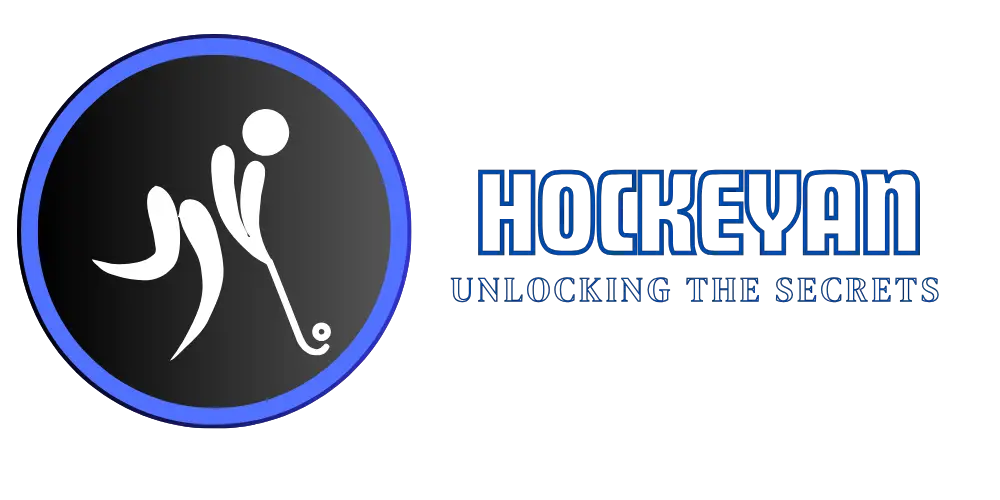Youth Hockey Ratings provide a benchmark for evaluating the skill levels of young hockey players. These ratings help track progress and identify talent.
Youth Hockey Ratings are essential for both players and coaches. They offer a clear assessment of skills and performance, helping set goals and measure improvement over time. Coaches use these metrics to tailor training programs and strategies. Players benefit from understanding their strengths and areas for improvement.
Parents can also gauge their child’s development and make informed decisions about their hockey journey. These ratings create a structured and competitive environment, fostering growth and excellence in youth hockey. With accurate ratings, young athletes can reach their full potential and enjoy a rewarding hockey experience.
Top Youth Hockey Leagues
Youth hockey is a thrilling sport for kids. It offers them a chance to develop skills and make new friends. Top youth hockey leagues, spread across the country, provide a competitive environment for young athletes. They are known for their structured gameplay and professional coaching.
Major Youth Leagues
The top youth hockey leagues in the United States include the USA Hockey Youth League, the Canadian Youth Hockey League (CYHL), and the Minnesota Youth Hockey League (MYHL). Each league is known for its unique structure and high level of competition.
- USA Hockey Youth League: One of the largest leagues with teams from all over the country.
- Canadian Youth Hockey League (CYHL): Known for its rigorous training and competitive matches.
- Minnesota Youth Hockey League (MYHL): Popular for its strong emphasis on skill development.
League Structures
Each league has its own structure to ensure fair competition and development. Here’s a look at the typical structure of these leagues:
| League | Age Groups | Season Duration |
| USA Hockey Youth League | 6-18 years | September – March |
| Canadian Youth Hockey League (CYHL) | 5-17 years | October – April |
| Minnesota Youth Hockey League (MYHL) | 4-16 years | November – February |
Most leagues divide players into different age groups. This helps in creating a balanced competition. The season duration varies but typically runs from the fall through early spring. Training programs and coaching clinics are also a part of these leagues. These programs help young players improve their skills and understand the game better.
Youth hockey leagues play a crucial role in developing future hockey stars. The structured environment ensures that every child gets a chance to learn and grow.
Credit: worldhockeyhub.com
Criteria For Team Ratings
Understanding how youth hockey teams are rated is essential for parents and players. This rating system helps track progress, identify strengths, and recognize areas for improvement. Various criteria are used to ensure fair and accurate ratings. Let’s explore the key criteria in detail.
Skill Levels
Skill levels are a fundamental part of team ratings. Evaluators look at:
- Skating Ability: Speed, agility, and balance on the ice.
- Stickhandling: Control, precision, and creativity with the puck.
- Shooting Accuracy: Hitting targets consistently.
- Passing: Accuracy and timing in passing the puck.
Each player’s skills are assessed during games and practice sessions. These assessments contribute significantly to the overall team rating.
Team Performance Metrics
Team performance metrics provide a comprehensive view of how well a team plays together. These metrics include:
| Metric | Description |
| Win-Loss Record | Number of games won versus lost. |
| Goals Scored | Total goals scored by the team. |
| Goals Against | Total goals allowed by the team. |
| Penalty Minutes | Total time players spend in the penalty box. |
These metrics are tracked throughout the season. They offer insights into the team’s overall performance and discipline on the ice.
Top-ranked Teams
Youth hockey showcases some of the most skilled young athletes. The competition is fierce, and many teams strive to be the best. Here, we explore the top-ranked teams in youth hockey.
National Champions
The National Champions represent the pinnacle of youth hockey. These teams have showcased exceptional talent and teamwork.
| Team | State | Key Player |
| Ice Warriors | Minnesota | Jake Thompson |
| Blizzard Bears | Michigan | Emma Davis |
| Frozen Stars | Massachusetts | Liam Johnson |
Regional Powerhouses
Regional Powerhouses dominate their respective areas. They are known for their skill and strategy.
- East Coast Eagles – Known for their swift skating and precision.
- West Coast Wolves – Famous for their aggressive play and strong defense.
- Southern Storm – Recognized for their strategic gameplay and powerful offense.
These teams have earned their place at the top. Their dedication and hard work set them apart.
Key Players To Watch
Youth hockey is filled with talented players. Some are future superstars. Keeping an eye on these players can be exciting and rewarding. Here, we highlight some of the key players to watch in youth hockey.
Rising Stars
These young players have shown exceptional skills and promise. They are the future of hockey. Let’s look at some of the rising stars in youth hockey.
| Player Name | Position | Team |
| Jake Thompson | Forward | Maple Leafs U16 |
| Emma Johnson | Defense | Red Wings U16 |
| Lucas Brown | Goalie | Sharks U14 |
- Jake Thompson: Known for his speed and scoring ability.
- Emma Johnson: A strong defender with great vision and passing.
- Lucas Brown: Excellent reflexes and shot-stopping skills.
Notable Alumni
Many great players began their careers in youth hockey. These notable alumni have become stars. They serve as inspirations for current young players.
- Connor McDavid: Started in youth leagues, now an NHL superstar.
- Sidney Crosby: Known for his leadership and incredible skills.
- Hilary Knight: A trailblazer in women’s hockey, inspiring many.
Watching these rising stars and notable alumni can be thrilling. Youth hockey is full of talent and potential. These players exemplify that promise.
Coaching And Development
Youth hockey ratings reflect the effectiveness of coaching and development. Quality training programs and coaching techniques are essential. They help young athletes improve their skills and performance.
Training Programs
Effective training programs are the backbone of youth hockey development. These programs should focus on various aspects of the game. They include skating, puck handling, shooting, and defensive skills.
- Skating Drills: Improve speed, agility, and balance.
- Puck Handling: Enhance control and maneuverability.
- Shooting: Develop accuracy and power.
- Defensive Skills: Strengthen positioning and tactics.
A well-rounded training program should include both on-ice and off-ice activities. Off-ice training helps build strength, endurance, and flexibility. This holistic approach ensures players are physically and mentally prepared.
| Training Component | Focus Area |
| On-Ice Drills | Skating, puck handling, shooting, defense |
| Off-Ice Training | Strength, endurance, flexibility |
Coaching Techniques
Coaching techniques significantly influence youth hockey ratings. Effective coaches use a mix of teaching methods and motivational strategies. These techniques help players understand and execute game strategies.
- Demonstration: Show players how to perform skills.
- Repetition: Practice drills repeatedly for mastery.
- Feedback: Provide constructive criticism and praise.
- Game Simulation: Create real-game scenarios for practice.
Good coaches also focus on building character and teamwork. They teach values like discipline, respect, and sportsmanship. This holistic development ensures players excel both on and off the ice.
Future Of Youth Hockey
The future of youth hockey is bright and full of promise. With new trends and technological innovations, the game is evolving quickly. Young players are getting better training and resources. Let’s explore the exciting changes in youth hockey.
Trends In Youth Sports
In recent years, there have been significant trends shaping youth sports. Youth hockey is no exception. These trends are transforming how young athletes train and play.
- Increased focus on skill development: Coaches emphasize fundamental skills over winning.
- Better training programs: Customized training plans are now available for young players.
- Year-round play: Hockey is no longer just a winter sport. Kids play all year round.
- Emphasis on safety: New rules and equipment aim to reduce injuries.
Technological Innovations
Technology is playing a crucial role in the advancement of youth hockey. These innovations are helping young players improve faster and stay safer.
| Technology | Impact on Youth Hockey |
| Video Analysis | Coaches use video to analyze and improve player performance. |
| Wearable Tech | Devices track players’ health and fitness levels. |
| Smart Equipment | Hockey sticks and skates now come with sensors for better feedback. |
| Virtual Reality | VR training helps players practice in a simulated environment. |
These trends and innovations promise an exciting future for youth hockey. Young athletes will have more opportunities to excel and enjoy the game. The future of youth hockey is indeed bright and full of potential.
How To Get Involved
Getting involved in youth hockey ratings can be exciting and rewarding. There are several ways to dive into this amazing sport. Whether you want to play or help out, there’s something for everyone.
Joining A Team
One of the best ways to get involved is by joining a team. Youth hockey teams can be found in many communities. Here’s how you can join:
- Visit local ice rinks to ask about youth leagues.
- Check online for youth hockey clubs in your area.
- Attend open tryouts to showcase your skills.
Joining a team lets you improve your skills and make new friends. It also gives you a chance to play in games and tournaments.
Volunteering Opportunities
If playing isn’t your thing, you can still get involved by volunteering. There are many ways to help out:
| Role | Description |
| Coach | Teach kids the basics of hockey and teamwork. |
| Team Manager | Organize games, practices, and team events. |
| Scorekeeper | Keep track of game scores and stats. |
| Equipment Manager | Ensure all gear is in good condition. |
Volunteering helps the community and supports young athletes. It also provides a way to stay connected to the sport you love.
In both joining a team and volunteering, you’ll find a place in the youth hockey community. This involvement will make a positive impact on young players and yourself.
Credit: worldhockeyhub.com
Credit: m.youtube.com
Frequently Asked Questions
What Are Youth Hockey Ratings?
Youth hockey ratings rank players and teams based on performance. They help identify skill levels and track progress.
How Are Youth Hockey Ratings Calculated?
Ratings are based on game performance, statistics, and sometimes scout evaluations. Algorithms and expert reviews ensure accuracy.
Why Are Youth Hockey Ratings Important?
Ratings provide benchmarks for improvement and can help players get noticed by scouts and coaches.
Where Can I Find Youth Hockey Ratings?
You can find ratings on dedicated websites, sports organizations, and league portals. They are often updated regularly.
Conclusion
Youth hockey ratings provide valuable insights for players and parents. They help identify strengths and areas for improvement. Understanding these ratings can guide training and development. Stay updated with reliable sources for accurate information. Embrace the journey and support young athletes in achieving their hockey dreams.




